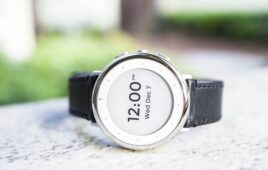
Researchers at the University of British Columbia’s school of kinesiology wanted to find out how accurately the iPhone’s pedometer counts steps within the Health app. (Credit: Sachi Wickramasinghe/UBC Public Affairs)
If you use your smartphone to monitor your physical activity, you’re probably more active than it suggests.
A new UBC study finds that the iPhone’s built-in pedometer missed about 1,340 steps during a user’s typical day when compared to a purpose-built accelerometer worn on the waist.
The accuracy of smartphones and health apps is becoming more important as medical experts and technology companies rush to tap into the smartphone’s enormous potential as a tool for gathering health data. Almost everyone has a smartphone, and they’re usually handy, making it easy for an average person to participate in a study, and for scientists to gather data.
“In order to make accurate conclusions, we as researchers need to know that the data is actually representative of real behaviour,” said Mark Duncan, the study’s lead author. “That has major impacts in terms of patient care, and in terms of developing new and better research in the field.”
The UBC study involved 33 participants and was divided into two parts: a laboratory test and a test in regular living conditions. In the lab test, participants carried two iPhones–a personal iPhone and a shared one provided by the lab–so researchers could see if different phone models produced different results. Participants walked on a treadmill for 60 seconds at various speeds and their steps were counted manually. Personal iPhones underestimated steps by 9.4 per cent at the slowest speed of 2.5 km/h. The shared iPhone fared slightly better at 7.6 per cent. At faster walking speeds, the phones were off by less than five per cent, which is generally considered acceptable for a pedometer.
For the other part of the study, participants fixed accelerometers to their waists for a full day, and recorded step readings from the iPhone at the beginning and end of the day. Over three days, the iPhone underestimated the accelerometer data by an average of 21.5 per cent, or 1,340 steps per day.
The technology is not entirely to blame, though. Several participants reported leaving phones behind during short trips to the bathroom or the water cooler. And daily living often involves slower walking speeds, which the lab test showed can affect accuracy.
“The accelerometer in the iPhone actually does a pretty good job when tested under lab conditions,” said senior author Guy Faulkner. “You just have to have it on you at all times.”
The results suggest researchers should use caution when relying on smartphone data, but Duncan said the average person shouldn’t be discouraged from using health apps for motivation.
“For people who are already tracking their steps, they can rest assured that if their phone says they’re getting the recommended 10,000 steps in a day, they are probably getting at least that many, and they are working toward better health,” said Duncan. “From a public health point of view, it’s better that it underestimates than overestimates.”




